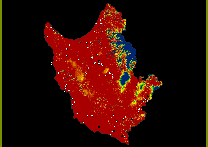GIS and Predictive Site Location Models in Archaeology
The role of Geographical Information Science (GIS) in the discipline of archaeology has grown dramatically over the past couple of decades and there are now many books dedicated to the subject (Gillings et al. 1999, Chapman 2006, Conolly & Lake 2006). The ability to deal with large amounts of data in a spatial context makes it an ideal tool to those studying past societies and their environments. In particular archaeological survey projects are in a position to fully maximise the benefits GIS has to offer. Collected survey data, often in huge quantities, can be stored, manipulated and analysed in a GIS package to produce not only impressive graphical output but also interesting alternative interpretations compared to conventional methods. More importantly to this project the data derived from such surveys, when combined with GIS, can be used to create predictive site location models. The ability to predict archaeological site locations has many advantages and it is because of these that the application has become so popular within archaeology.
"the driving force behind this growth in predictive model development has been the need for the identification, protection, and management of increasingly threatened cultural resources in cost-effective and useful manner." (Duncan & Beckman 2000, p33).
Governments agencies became interested in these prediction techniques as early as the 1970s in the United States as it presented the opportunity for cost saving by reducing the areas needing to be surveyed and targeting those areas with most potential (Wheatley & Gillings, 2002). This popularity with government agencies and other institutions has meant a wealth of literature on the subject in general (Westcott & Brandon 2000, Fry et al. 2004, Espa et al. 2006, Kvamme 2006, Mehrer & Wescott 2006, Lock & Harris 2006) as well as numerous examples of where the technique has been applied (Brandt et al. 1992, Stancic & Kvamme 1999, Duncan & Beckman 2000, Westcott & Kuiper 2000).
It should be noted that predictive modeling does not refer to a single method and a wide range of approaches can be used. These predictive models can be based on two different sources of information, either deductive (theory driven) or inductive (data driven) (Wheatley & Gillings, 2002). The model employed in this project will be based on observations derived from the Western Cyprus Survey and as such will be an inductive model.



